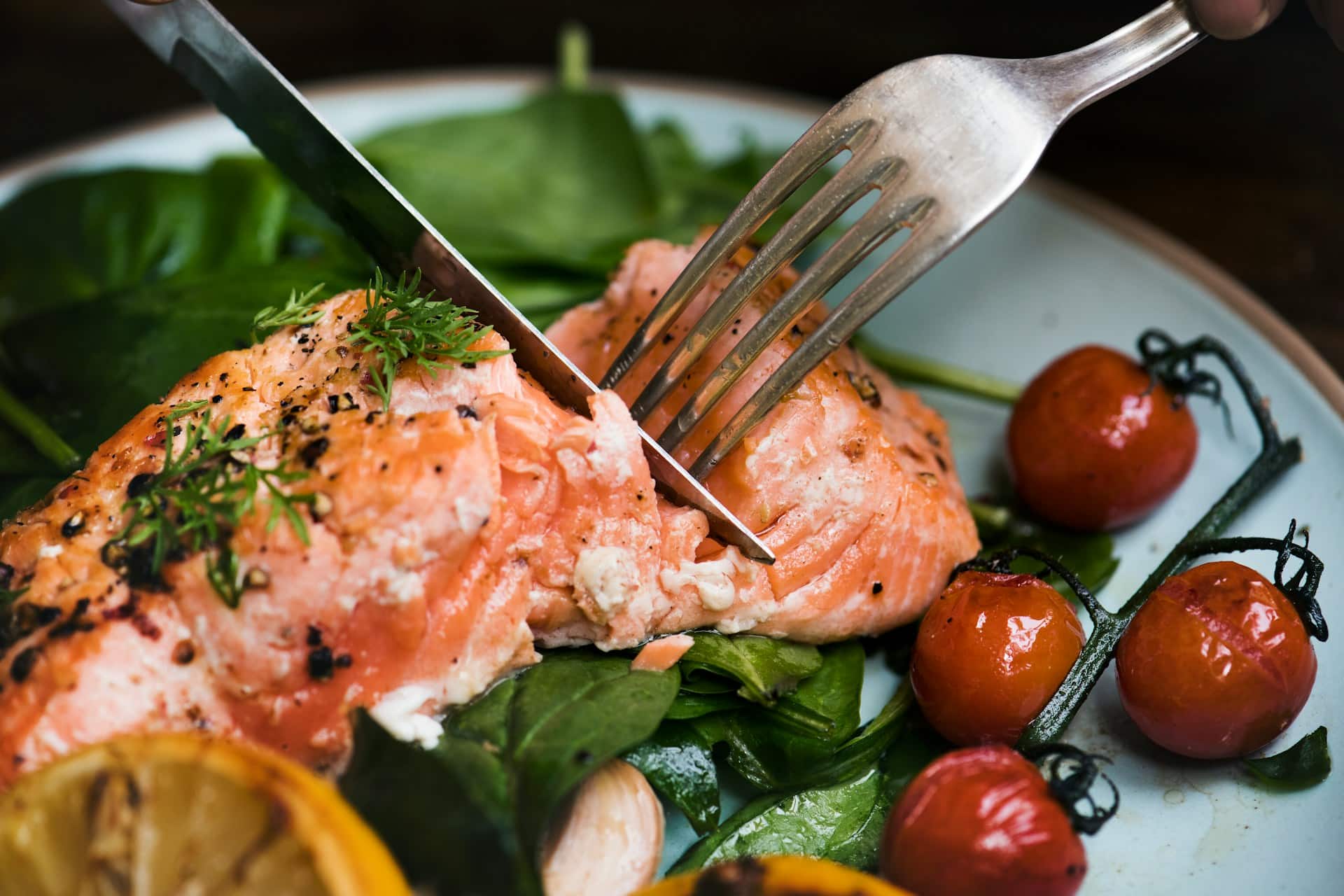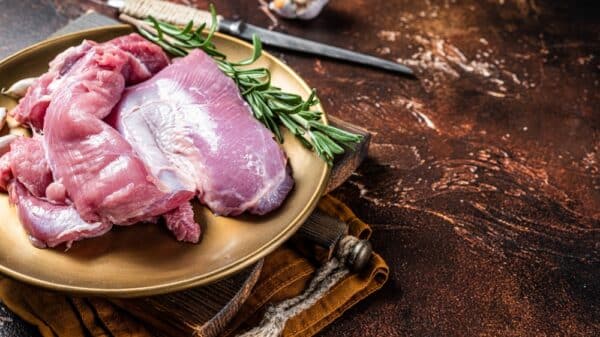Dining out often comes with an undeniable charm, especially when it involves delicately prepared seafood dishes. Why does fish seem to taste better at restaurants? Understanding the fundamentals of sourcing, ingredient quality, and proper technique can elevate your home cooking to a level that competes with your favorite eateries.
Sourcing Quality Fish: The Foundation of Flavor
To begin creating exceptional fish dishes at home, the first step is sourcing quality seafood. Restaurant chefs typically have established relationships with reliable suppliers who provide fresh, sustainable fish. Chef Moira Hill emphasizes the importance of knowing where your fish comes from, advising that if its origins are unclear, it’s better to look elsewhere.
For home cooks, this means taking the time to ask questions:
– What fish species are you buying?
– Where was it sourced?
– How was it caught?
Look for eco-labels like the Marine Stewardship Council (MSC) blue checkmark to ensure sustainability. Engaging with your local fishmonger can also lead to valuable insights about what’s in season and freshest that day, essential information that can significantly enhance the flavor of your dish.
Elevating Dishes with High-Quality Ingredients
While the fish itself is critical, the accompanying ingredients play an equally vital role. Many restaurants prioritize seasonal and locally sourced produce, which tends to deliver optimal flavor compared to out-of-season options. Seasonal menus offer flexibility, allowing chefs to adapt based on what is fresh and available, thus enhancing the overall dining experience.
Using high-quality herbs and spices can drastically improve flavor profiles in your home cooking. Although these might come at a higher cost, investing in quality can transform a mediocre dish into something memorable. By ensuring every ingredient contributes to the dish, you can recreate restaurant quality right in your kitchen.
Proper Storage: Maximizing Freshness
Restaurants meticulously store their fish to maintain freshness, and this is where many home cooks falter. Adhering to optimal storage practices is crucial, whether you opt for fresh or frozen seafood.
Fresh fish should be stored on ice in the refrigerator, kept separate from other foods to mitigate cross-contamination. Ideally, it should be consumed within a couple of days of purchase to ensure peak flavor.
For frozen fish, keeping it wrapped in its original packaging is essential. Positioning it near the back of the freezer helps maintain constant low temperatures, preserving its quality over time. When ready to prepare, defrosting it in the refrigerator 24 hours beforehand yields the best results.
Conclusion: Bringing the Restaurant Experience Home
Creating restaurant-quality fish dishes involves more than just following a recipe; it’s about understanding the nuances of sourcing, selecting quality ingredients, and practicing proper storage techniques. By enhancing your knowledge in these areas, you can elevate your home cooking and enjoy the rich flavors that make dining out so special. So the next time a seafood craving strikes, you’ll be well-equipped to recreate a memorable meal right in your own kitchen.## How to Thaw Fish for Optimal Flavor and Texture
When it comes to thawing fish, the method selected can greatly influence the final dish. While it might be tempting to leave fish out at room temperature or submerge it in warm water, these practices can negatively affect texture and overall quality. A better approach is the cold-water thawing method. Submerge the fish in a sealed plastic bag in cold water for about 10 minutes at a time. This method is quick, keeps the fish’s moisture intact, and ensures a firm texture once cooked.
Exploring Unique Seafood Varieties
Dining out often brings the familiar faces of salmon, cod, and tuna to the table. While these fish are undeniably popular, there exists a world of diverse seafood varieties awaiting discovery. Chef Moira Hill emphasizes that alternatives like trout can offer a delightful, nutty flavor that’s equally enjoyable as salmon. Additionally, white fish such as halibut and tilapia provide mild flavors that excel when paired with robust sauces or vibrant herbs.
For the adventurous home chef, consider exploring less common choices like shad, which shares characteristics with salmon, or monkfish, known for its sweet taste and ability to mimic the texture of scallops. These varieties may not be available at every grocery store, but seeking them out at specialty markets can add an exciting twist to your seafood meals.
Don’t Overlook Tinned Fish
Tinned fish has recently gained popularity, transforming the way seafood is perceived in casual dining settings. Many might associate canned fish with anchovies or sardines, but a whole world exists beyond these staples. Restaurants like Saltie Girl in Boston celebrate this trend by featuring an extensive menu focused solely on tinned varieties.
For home chefs, there are practical and budget-friendly options available. Trader Joe’s offers various canned fish options that are both affordable and delicious. Ensure you maximize flavor and texture by brushing up on proper tinned fish preparation techniques, which can elevate your dishes significantly.
The Art of Proper Fish Preparation
Successful seafood dishes begin long before they hit the plate. Properly prepping fish involves a meticulous process. As Chef Moira Hill states, this includes butchering, deboning, and portioning the fish to suit the dish requirements. For whole fish, these preparations can be time-consuming but are crucial for achieving a high-quality result.
Before cooking, fillets should be rinsed and patted dry to eliminate excess moisture. If you’re short on time, consider air-drying the fish in the refrigerator to enhance texture and allow seasonings to penetrate deeply.
Selecting the Right Cooking Method
The chosen cooking method can significantly influence the final taste and presentation of the fish. Different fish types have unique flavors and fat contents, which makes some techniques more suitable than others. Chef Hill suggests that frying and pan-frying are universally excellent methods, maximizing flavor while achieving a desirable crust.
Experimenting with various techniques like poaching, roasting, or even grilling can lead to delightful variations in flavor. For a foolproof home-cooking method, consider cooking fish en papillote, which involves sealing it in parchment paper with seasonings to retain moisture and flavor.
With the right techniques and a willingness to explore new options, home chefs can elevate their seafood game from ordinary to extraordinary. From proper thawing methods to unique fish varieties and cooking techniques, a little effort can lead to impressive and flavorful meals. Embrace the journey of seafood exploration, and your dinner table will thank you.## The Art of Cooking Fish: Secrets from Professional Kitchens
Cooking fish may seem daunting to some home chefs, but with a few foundational techniques and the right mindset, you can elevate your fish dishes to restaurant-quality meals. Below, we explore essential tips for preparing fish perfectly, from equipment to flavor pairings.
Essential Cooking Equipment
In the realm of cooking, particularly when preparing fish, having the right tools can make all the difference. While professional kitchens boast sophisticated gadgets, you don’t need an arsenal of equipment to replicate that success in your home kitchen. A high-quality sauté pan, kosher salt, and olive oil are the true essentials, according to renowned chef Moira Hill.
For those who want to go a step further, investing in a sharp chef’s knife can enhance your cutting precision. Additionally, tools like a fish spatula and fillet knife will simplify the process, especially when handling delicate fish fillets. These tools increase efficiency, allowing you to focus more on the nuances of flavor and cooking techniques.
Cooking to Perfection: Temperature and Timing
Understanding how to achieve the perfect internal temperature is crucial when cooking fish. Under-cooked fish can pose health risks, while overcooked fish loses its appealing texture. Celebrity chef Eric Ripert suggests using a metal skewer to check doneness. Insert it into the thickest part of the fish, then touch it to your wrist. A well-cooked piece should feel warm but not hot.
General guidelines suggest cooking fish for about 10 minutes per inch of thickness, but a meat thermometer is the most reliable tool for reassurance, aiming for an internal temperature of 140°F. For shellfish like shrimp or mussels, visual cues—like color change or shell opening—are excellent indicators of doneness.
Flavor Pairings: A World of Possibilities
The versatility of fish allows for endless flavor combinations inspired by culinary traditions across the globe. Countries with rich coastal cultures, such as Greece and Italy, often favor ingredients like olive oil, lemon, and fresh herbs. Alternatively, spice lovers can introduce Indian or Caribbean flavors, combining traditional spices with sweet fruits.
For home cooks looking to stretch their culinary muscles, consider swapping fish into non-traditional dishes. White fish, with its mild flavor, can often replace chicken or pork, opening new avenues for experimentation.
Don’t Hesitate to Experiment
Though certain flavor combinations are classics, stepping outside of these boundaries can lead to delightful surprises. Professional chefs often mix flavors from disparate cuisines—like melding Mexican and Asian influences—to create unique dishes. Think of salmon paired with spicy corn and mango salsa over a bed of Asian coleslaw; such combinations can invigorate familiar tastes.
The key is to embrace trial and error. Don’t shy away from trying unexpected ingredients together. You might discover a new family favorite in the process!
Perfecting the Plate: Choosing Sides
Great cooks understand that a dish is more than just its main ingredient. The sides are equally crucial in enhancing the overall experience. Chef Moira Hill notes that fish pairs well with a variety of sides, including grains like rice or pasta, and vegetables like broccoli or carrots.
Pairing your fish with complementary sides, such as herbed potatoes or rice that soaks up flavorful sauces, not only enhances taste but also elevates presentation. Simple, seasonal vegetables roasted in olive oil can provide a delightful contrast to rich or oily fish.
Conclusion
Cooking fish can feel intimidating at first, but with the right tools and techniques, home cooks can create delicious and impressive meals. By understanding the importance of temperature, experimenting with flavors, and thoughtfully selecting sides, you can bring the essence of fine dining into your own kitchen. Remember, confidence in your cooking will grow with practice, so don’t hesitate to dive into the wonderful world of fish cuisine!
Image Source: Unsplash































